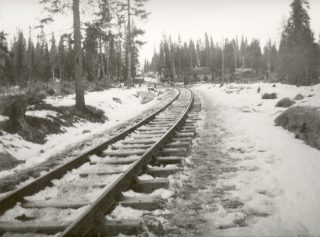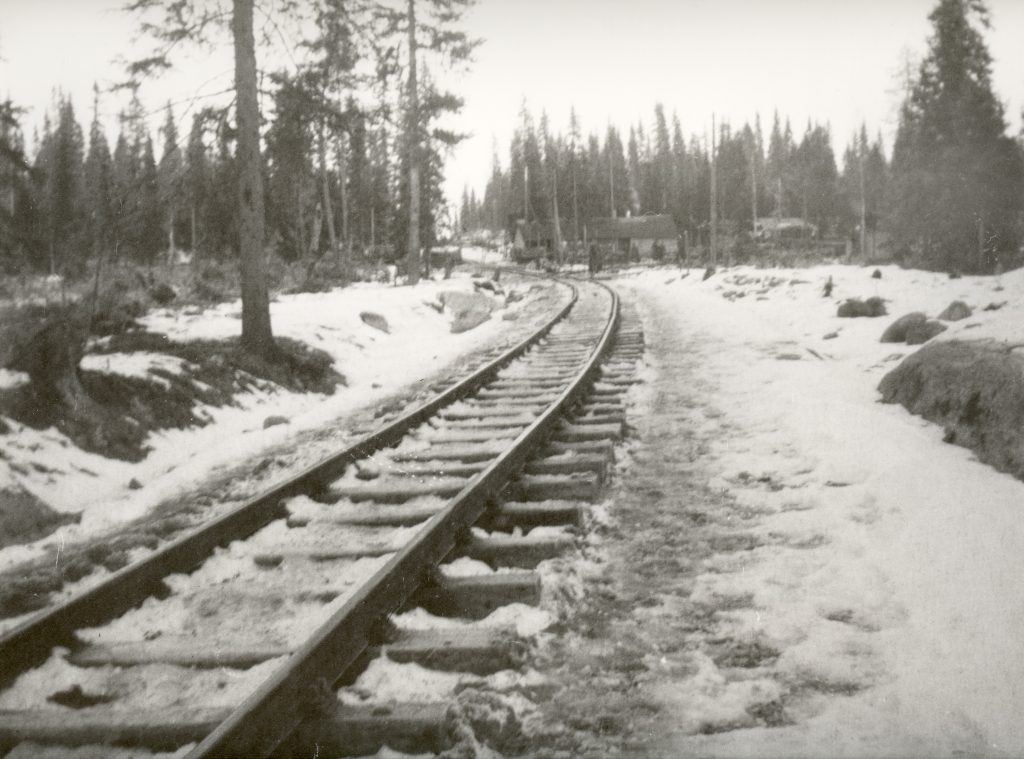The oldest place of residence in the village has been Lapinniemi on the southern shore of Lake Yli-Kuoliojärvi, inhabited by Forest Sámi people. Autioniemi may have been a burial place for the Sámi. The winter village of the Lapland community, or Maaselkä Siida, has been nearby in Maaselkä’s Oijusluoma. The Sámi surname, Ikäpäivä, appears in the Kuolio region still in the 1830s, so they have lived in Kuolio with the settlers and assimilated into the local population.
Matinpoika Matero (b. 1685) arrived at the beginning of the 18th century on the north side of Lake Yli-Kuoliojärvi in present-day Matero. Before the war, there were fifty houses in Kuolio, and there was a tavern and a school in Vattula. During the war, the Germans burned Kuolio apart from the Kataja house.
People were able to reach Kuolio when the road was opened in 1958. The telephone came in the early 1960s. Electricity was only available in 1979, Kuolio’s tap water in 1989.
The surviving windmill in Repovaara has been moved to the Kuusamo Outdoor Museum.
The village committee of Kuolio started its operations in 1991. Kuolio has been a strongly Laestadian area.
Names of houses in Kuolio are e.g., Hukkanen, Saunajärvi, Kataja, Vääränvaara, Lehto, Alakumpu, Palosaari, Nivala, Veteläinen, Kantoniemi, Marjala, Harjula, Ellala and Karjalainen.
Kuolio during the war years 1939–1945
The villages of the Kuolio region had a significant position during the war years – they were located along the important road Ouluntie in the westernmost part of Kuusamo, far from the eastern border and the war fronts.
The border of the war zone was at Kuolio from autumn 1939. A military detachment was stationed in the village, which monitored the traffic in Ouluntie and checked the traffic permits. The soldiers were either young men who after some time moved to the fronts or those wounded at the fronts.
After the start of the Winter War on November 30th, 1939, the civilian population of Kuusamo was evacuated to Pudasjärvi and the neighboring municipalities of Oulu. In addition to the soldiers, during the Winter War, Kuolio was left with conscripts and lotta for food supply tasks. There was a total of about 40 cows in a few barns, whose milk was transported to the hospital in the church village of Kuusamo.
During both evacuations, the village of Kuolio was the first major renovation and maintenance stage after the church village of Kuusamo.
After the Continuation War ended on September 19th, 1944, all of Kuusamo was evacuated. The Germans retreating to the north destroyed almost everything along their retreat route, including the villages along the Ouluntie, e.g., Kuolio.
Following the retreating Germans, an estimated 10 000 Russian soldiers came to Kuusamo at the end of September 1944. Contrary to the peace terms, soldiers came as far as Kuolio, where the Finnish border barrier was changed into a border barrier between Finnish and Russian forces. It was placed on the east side of the Penttilänvaara road junction. The Russians left Kuusamo during November.
Residents of the villages west of the border barrier were allowed to return from evacuation already from the end of October 1944. By Christmas, almost everyone had returned to Penttilänvaara, Käsmä, Särkelä, Jokilampi and Purnu. Returning to the completely destroyed village of Kuolio was slower. Permits to move to the rest of Kuusamo were usually issued only in 1945.
Taimi Pitkänen’s forbidden photos from the trench railway

Taimi Pitkänen (born Pätsi, 1925–2017) from Penttilänvaara recorded considerable amounts of the history of Kuusamo’s home region. During the war, she used her small camera to take pictures of her environment, both houses and traces of the war. One of the most special filming locations in Pitkänen’s production is the trench railway built by the Germans. The trench railway, built mainly by prisoners, ran near Pitkänen’s home, so she was able to photograph it despite the prohibitions. In her diary, she accurately recorded the events of the wartime. The markings were later significantly useful when veteran IDs were applied for from Kuusamo.
The German trench railway
In 1942–1944, the Germans built a narrow-gauge railway from Hyrynsalmi via Taivalkoski to Kuusamo to Vanttajankannas with the labour of prisoners of war. The track ran through Penttilänvaara. After the end of the war, the track was dismantled and handed over to the Soviet Union under the terms of the peace, as it was the property of the Germans.
